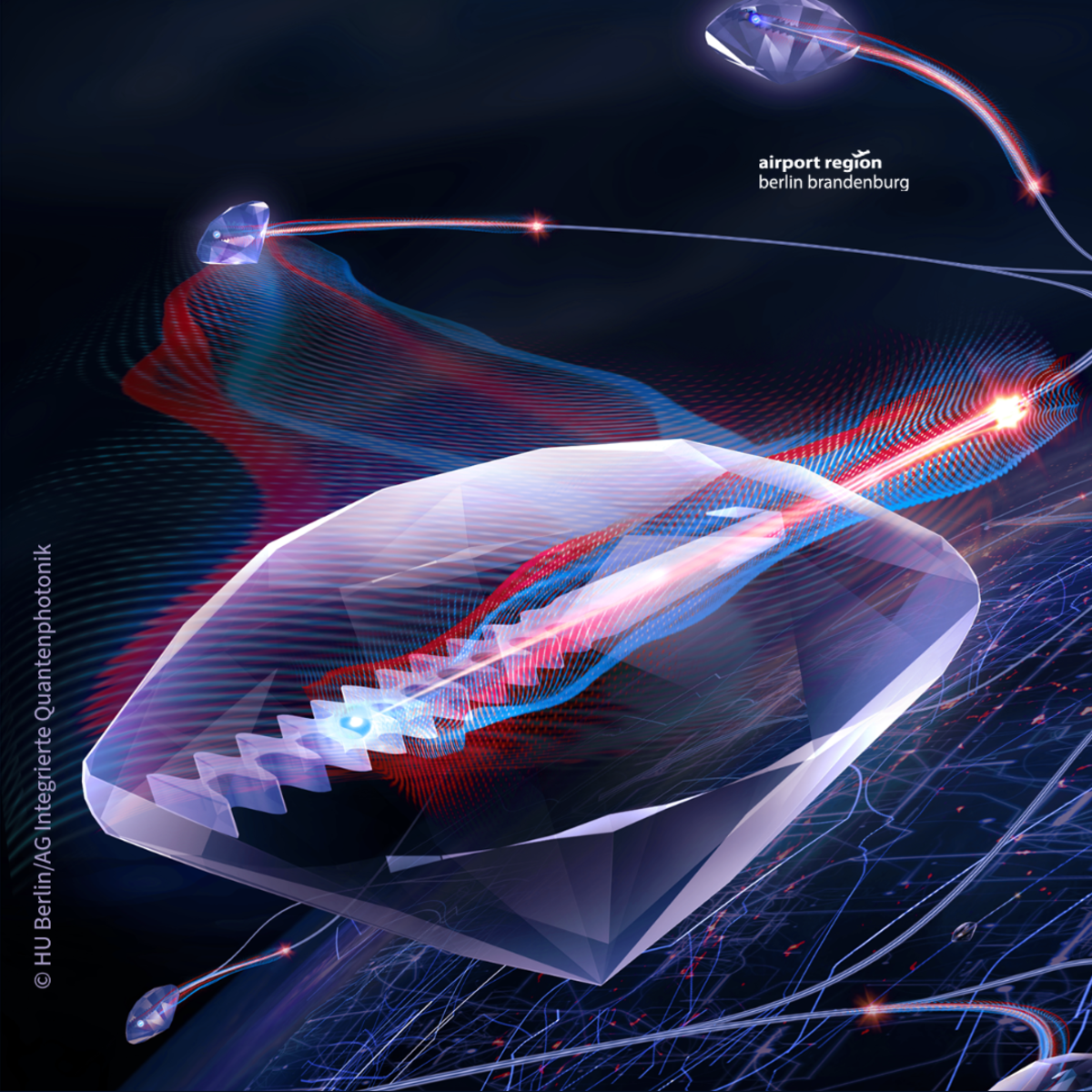Researchers at HU and Ferdinand-Braun-Institut make an important step towards the quantum internet
Diamond material is of great importance for future technologies such as the quantum internet. Special defect centers can be used as quantum bits (qubits) and emit single light particles that are referred to as single photons. To enable data transmission with feasible communication rates over long distances in a quantum network, all photons must be collected in optical fibers and transmitted without being lost. It must also be ensured that these photons all have the same color, i.e., the same frequency. Fulfilling these requirements has been impossible until now.
Researchers in the "Integrated Quantum Photonics" group led by Prof. Dr. Tim Schröder at Humboldt-Universität zu Berlin have succeeded for the first time worldwide in generating and detecting photons with stable photon frequencies emitted from quantum light sources, or, more precisely, from nitrogen-vacancy defect centers in diamond nanostructures. This was enabled by carefully choosing the diamond material, sophisticated nanofabrication methods carried out at the Joint Lab Diamond Nanophotonics of the Ferdinand-Braun-Institut, Leibniz-Institut für Höchstfrequenztechnik, and specific experimental control protocols. By combining these methods, the noise of the electrons, which previously disturbed data transmission, can be significantly reduced, and the photons are emitted at a stable (communication) frequency.
In addition, the Berlin researchers show that the current communication rates between spatially separated quantum systems can prospectively be increased more than 1000-fold with the help of the developed methods—an important step closer to a future quantum internet.
A thousand times thinner than human hair
The scientists have integrated individual qubits into optimized diamond nanostructures. These structures are 1000 times thinner than a human hair and make it possible to transfer emitted photons in a directed manner into glass fibers. However, during the fabrication of the nanostructures, the material surface is damaged at the atomic level, and free electrons create uncontrollable noise for the generated light particles. Noise, comparable to an unstable radio frequency, causes fluctuations in the photon frequency, preventing successful quantum operations such as entanglement.
A special feature of the diamond material used is its relatively high density of nitrogen impurity atoms in the crystal lattice. These possibly shield the quantum light source from electron noise at the surface of the nanostructure. "However, the exact physical processes need to be studied in more detail in the future," explains Laura Orphal-Kobin, who investigates quantum systems together with Prof. Dr. Tim Schröder. The conclusions drawn from the experimental observations are supported by statistical models and simulations, which Dr. Gregor Pieplow from the same research group is developing and implementing together with the experimental physicists.
The future is light
With a history going back 200 years in optical technology, its strong scientific foundation and the high number of specialized companies, the capital region is one of Europe’s leading locations in optics, photonics and microsystem technology.
In its role as an interface between various technologies, the region often forms the basis for innovative products and services, e.g. in medical and sensory technology or energy and communication technology.
Dynamic economic development
The Airport Region Team is a cooperation of the two business development agencies, Berlin Partner for Business and Technology and the Economic Development Agency Brandenburg (WFBB) and is focused on economically strengthening the region around Berlin Brandenburg Airport (BER). With headquarters directly at BER Airport, we are the first point of contact for companies interested in opening new branches or offices in the region.
Our close cooperation with the respective industry experts of each economic development agency means that we can support you with all your questions regarding company expansions and settlements.
For more information on the economic development of the region's growth industries, business and technology support for companies, investors and scientific institutions, please contact:
Melanie Gartzke I melanie.gartzke(at)airport-region.de
(Press release HU Berlin & FBH: April 6, 2023 "Researchers at HU and Ferdinand-Braun-Institut make an important step towards the quantum internet")
